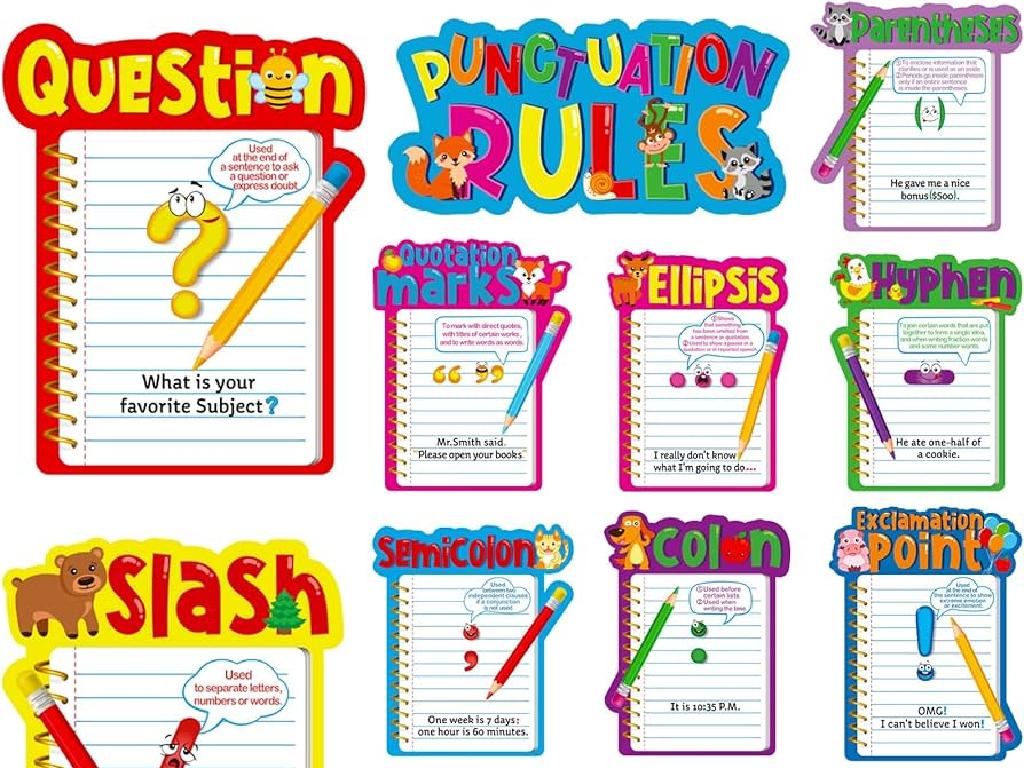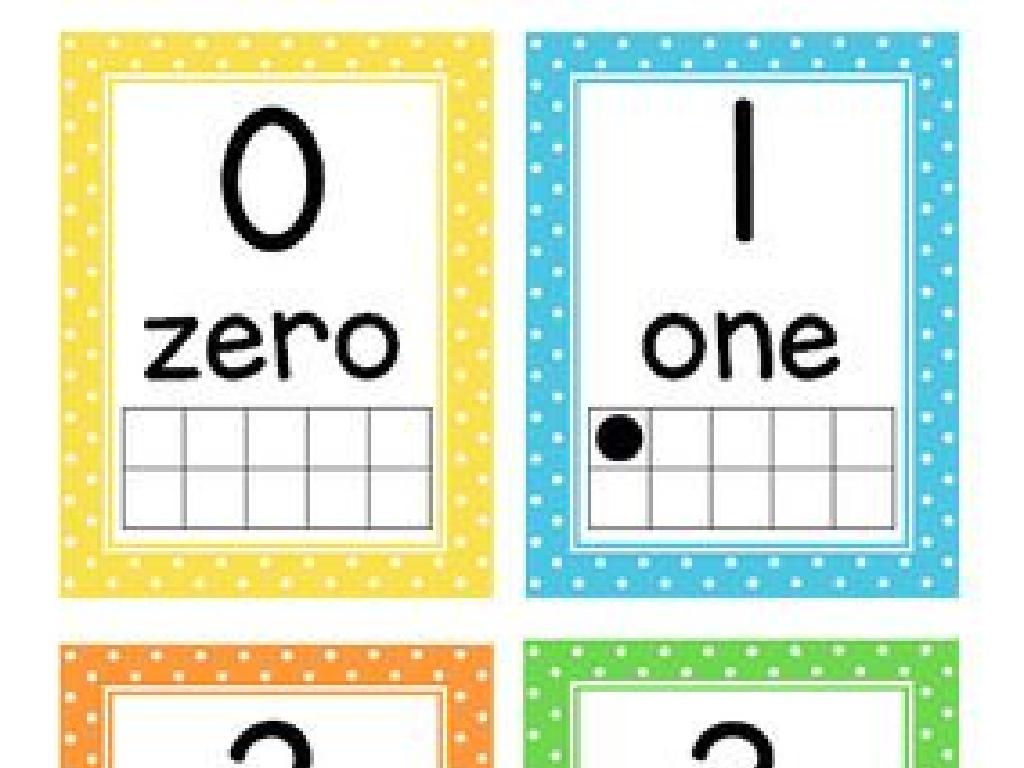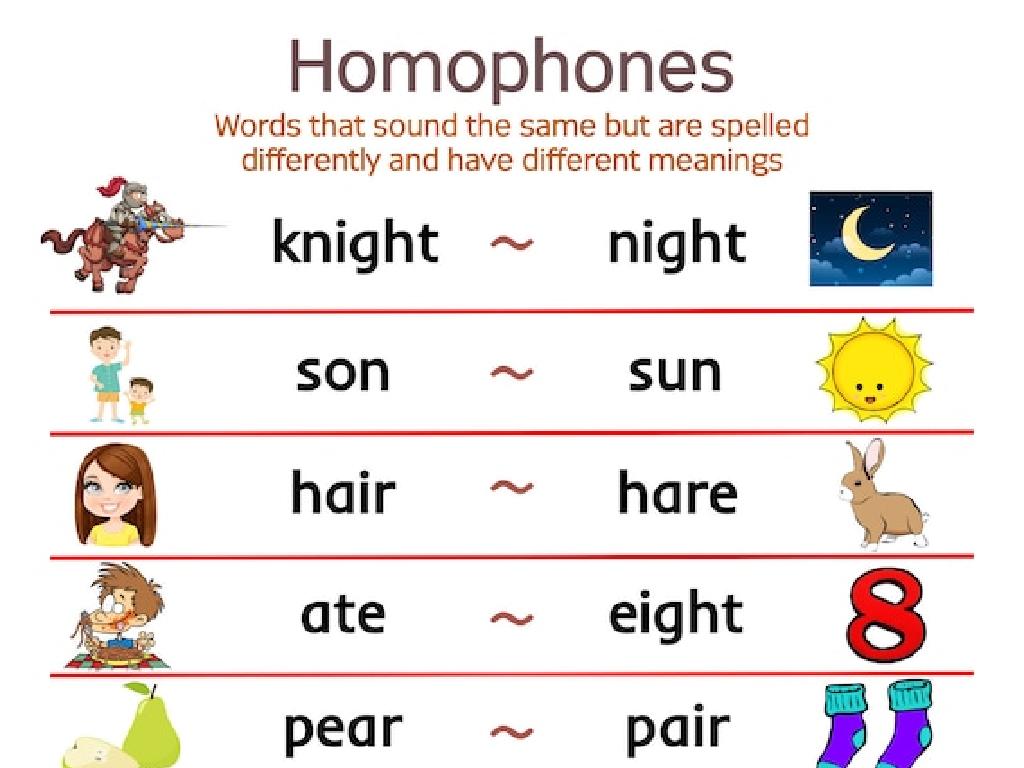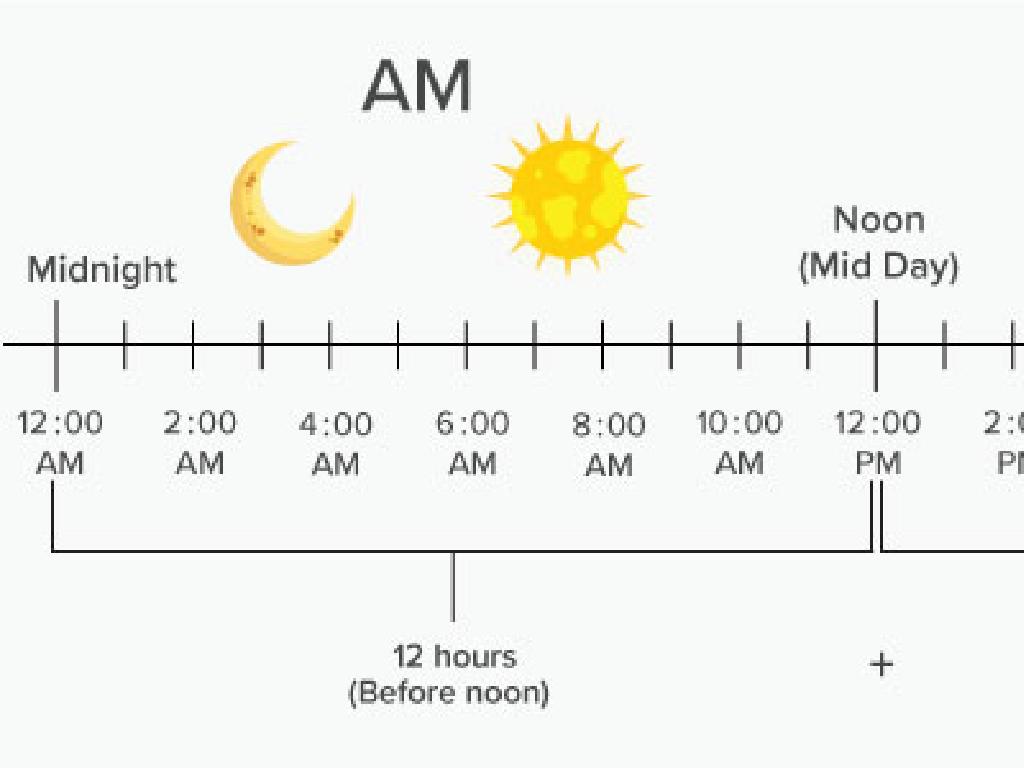Use A Map Key
Subject: Social studies
Grade: Kindergarten
Topic: Maps
Please LOG IN to download the presentation. Access is available to registered users only.
View More Content
Welcome to the World of Maps!
– What is a map?
– A map is a drawing of a place
– Maps show us places
– They show roads, mountains, and rivers
– Maps help us find things
– Like finding a friend’s house or a park
– Daily uses of maps
– Parents use maps for driving or shopping
|
This slide introduces the concept of maps to Kindergarten students. Begin by explaining that a map is a picture or drawing that shows different places. Show them how maps can depict various physical features like roads, mountains, and rivers. Discuss how maps are helpful in locating places, such as a friend’s house or a park. Provide examples of how maps are used in everyday life, such as parents using them to navigate while driving or to plan shopping trips. Use simple language and relatable examples to ensure the students can connect with the material. Consider bringing a colorful map to show the class or drawing one on the board to make the lesson interactive and engaging.
Understanding Map Keys
– What’s a map key?
– It helps us read the map by explaining symbols
– Map keys are like secret codes!
– Symbols tell a story
– A tree might mean a park, and a wavy line could be a river
– Let’s learn some common symbols
– We’ll see what a house, stop sign, and bridge mean on a map
|
This slide introduces the concept of a map key to Kindergarten students, making it relatable by comparing it to a secret code. Emphasize that a map key is essential for understanding the different symbols that represent real-world objects or landmarks on a map. Use simple and familiar examples like a tree for a park or a wavy line for a river to illustrate the point. Encourage the students to think of symbols as pictures that tell us a story about the places on the map. Plan an interactive activity where students can match symbols to their meanings or create their own simple map with a key.
Understanding Map Symbols
– Symbols represent things
– A tree symbol for a park
– Like a tree on the map can show us where we can find a park to play
– Wavy lines show rivers
– Just like water, wavy lines can mean there’s a river to see
– Map key explains symbols
– It’s a guide that helps us read the map correctly
|
This slide introduces Kindergarten students to the concept of symbols on a map. Explain that just like in their favorite storybooks, pictures on a map can tell us a story about the places around us. A tree might not be a real tree but a place to play, and wavy lines might represent water flowing in a river. Emphasize the importance of the map key, which is like a legend or a dictionary for the map, helping us understand what each symbol means. Use simple and relatable examples to ensure the students can connect with the information. You can bring a simple map to class and point out the symbols, or even create a map of the classroom with symbols representing different objects or areas.
Creating Our Classroom Map Key
– Let’s make a map key together
– Think of symbols for our map
– Symbols are small pictures that represent something bigger
– Choose a symbol for the reading corner
– Maybe a book or a cozy chair?
– Draw and color our symbols
– Use your crayons to make the symbols stand out
|
This slide is designed to engage Kindergarten students in creating a map key for their classroom map. Start by explaining what a map key is: a guide that explains what the symbols on a map represent. Encourage the children to think creatively about which symbols could represent different areas of the classroom, such as the reading corner. Suggest that they could use a book symbol for the reading corner to represent the joy of reading. Provide them with drawing materials and assist them in drawing and coloring their chosen symbols for the map key. This activity will help them understand the concept of symbols and how they are used in maps to represent real-world objects or areas.
Map Key Adventure: Find the Playground
– Let’s learn to use a map key
– Can you spot the playground?
– Look for the symbol that stands for the playground
– Identify what the blue square means
– The blue square might be water, like a pool or a lake
– Share what you’ve found with the class
|
This slide is designed for a fun and interactive class activity to help Kindergarten students understand and use a map key. Start by explaining that a map key is like a secret code that helps us understand what the symbols on a map mean. Then, ask the students to find the symbol for the playground on the map and use the map key to decode it. Discuss what the blue square on the map key represents, which could be a body of water. Encourage the children to share their findings and thoughts with the class. This activity will help them grasp the concept of symbols representing real-world objects and places on a map.
Our Classroom Map Adventure
– Let’s draw our classroom map!
– We use symbols for objects
– Like a drawing of a book for our bookshelf
– What’s a map key?
– It tells us what each symbol means
– Place the bookshelf symbol
– Where does our bookshelf go on the map?
|
This slide introduces the concept of creating a map to Kindergarten students, focusing on the use of symbols and a map key. Start by explaining that a map is a drawing that shows where things are located. Introduce the idea of using simple symbols to represent objects in our classroom, such as a book for the bookshelf. Explain that a map key is a guide that explains what each symbol stands for. Engage the students by asking them to suggest where to place the bookshelf symbol on their maps. This activity will help them understand spatial concepts and the basics of map reading. Make sure to provide clear examples and keep the activity interactive.
Class Activity: Make Your Own Map!
– Be a map maker for a day
– Draw your home to school route
– Create a map key with symbols
– Use simple symbols like a house, school, and trees
– Share your map with the class
|
This activity is designed to help Kindergarten students understand the concept of a map key and the importance of symbols in representing real-world objects or landmarks. Encourage the children to think about the landmarks they pass on their way to school and how they can represent them with simple drawings or symbols. Provide them with the necessary materials such as paper, crayons, and stickers for symbols. Assist them in creating a map key by choosing symbols for their map and explaining what each symbol represents. Once completed, have each student present their map to the class, discussing the route and symbols they chose. This will help them practice public speaking and boost their confidence in their map-making skills.
Map Key Mastery: Review and Share
– Reviewing our map key knowledge
– Show and tell with our maps
– Each student will present their map to the class
– Understanding our friends’ map keys
– We’ll look at the symbols and colors used by others
– Celebrating our map skills
|
This slide is meant to consolidate the students’ understanding of map keys by reviewing what they’ve learned and engaging in a show-and-tell activity. Encourage the children to share the maps they’ve created, focusing on the map keys they’ve designed. Ask the class if they can interpret the symbols and colors their peers used on their maps. This will not only reinforce their knowledge of map keys but also promote public speaking and peer learning. As a teacher, provide positive feedback and celebrate the students’ ability to use map keys effectively. This activity will help assess their comprehension and give them a sense of accomplishment in their cartography skills.
Map Key Masters!
– Congratulations, young explorers!
– You can use and make a map key
– A map key helps us understand map symbols
– Map keys are clues to treasure
– Think of a map key like a secret code to find things
– Keep practicing your map skills
|
Well done to the class for learning about map keys! Reinforce the concept that a map key is an essential part of a map, acting like a legend to help us understand the symbols used. It’s like a secret code that helps us find different things on the map, such as landmarks, paths, and treasures. Encourage the children to keep practicing by looking at different maps and identifying the symbols with the help of the map key. Remind them that every time they use a map, they’re going on an adventure, and the map key is their guide.






